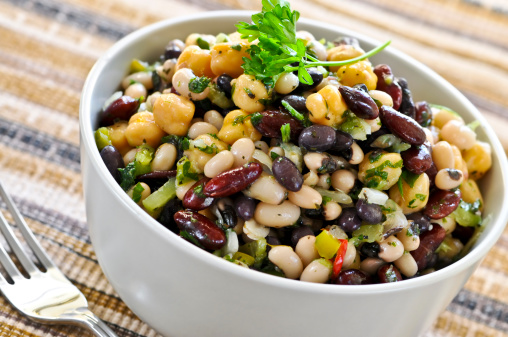Whether as a meat alternative or a plant based protein source, legumes are one of the healthiest and versatile foods available. As well, legumes are a rich source of fiber and B vitamins among a number of health benefits. Legumes are typically low in fat, contain no cholesterol, and are high in folate, potassium, iron and magnesium. Legumes also decrease blood sugar levels and increase healthy gut bacteria.
Below are several types, their health benefits and their typical uses.
Soybeans
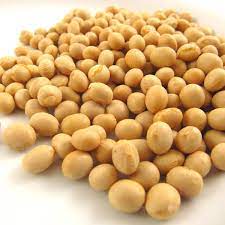
Also known as edamame, soy beans have been consumed for thousands of years. Soybeans are typically used in snacks, salads, casseroles and rice dishes. They are available in a variety of forms including including soy flour, soy protein, tofu, soy milk, soy sauce, and soybean oil.
Soybeans even have some health benefits including reducing risk of cancer and alleviation of menopause symptoms. However, soybeans should only be consumed in moderation because they also come with some concerns. Soybeans are a common allergen. They have also been linked to the suppression of thyroid function as well as flatulence and diarrhea in sensitive individuals.
Garbanzo beans
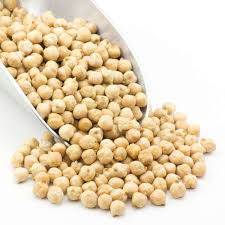
Also known as chickpeas, garbanzo beans are one of today’s most popular legume. They have been grown in Middle Eastern countries for thousands of years. Their nutty taste and texture make them a popular choice for casseroles, salads, hummus, minestrone soup, and Spanish and Indian dishes. They are also quite popular as a roasted snack.
Yet, what is most impressive about garbanzo beans is their nutrition profile. Garbanzo beans are a wonderful source of protein, folate, iron, phosphorous, copper and mangnese. Additionally, garbanzo beans are low in calories, therefore excellent for weight loss. They help manage your blood sugar levels and may protect against certain chronic diseases including heart disease, cancer and diabetes.
Adzuki Beans
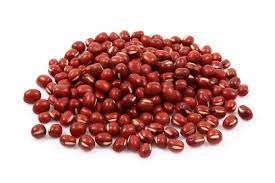
Also known as field peas or red beans, adzuki beans are linked to several health benefits. According to Healthline, they may help reduce the risk of diabetes, improve heart health and help with weight loss. Meanwhile, other research suggests that adzuki beans may fight cancer cells and strengthen your bones.
Adzuki beans are commonly added to soups, salads, chilis, rice dishes as well as Japanese and Chinese dishes and mashed into a sweet bean paste. Adzuki beans may also be ground into a flour.
Anasazi Beans
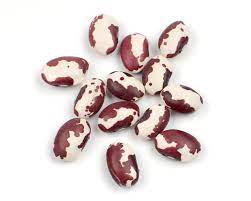
The anasazi bean, known by native Americans as “the ancient ones,” was first produced in New Mexico many millenniums ago. Due to their high amount of micronutrients, fiber, protein and lectin content, they have several health benefits. Research suggests that anasazi beans may fight cancer, prevent and treat diabetes, and improve gut health.
Most impressive is that, compared to other beans anasazi beans contain significantly less antinutrients. Antinutrients are plant compounds that reduce the body’s ability to absorb essential nutrients. That said, consumption of anaszi beans may reduce the activity of antinutrients in the body.
Anasazi beans are predominantly used in many refried and baked bean recipes. They’re also used in soups and in recipes that call for pinto beans.
Black-Eyed Peas
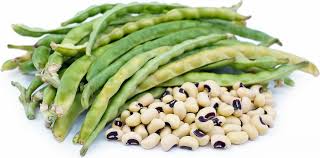
Besides representing good luck on New Year’s Day, black-eyed peas, also known as cowpeas, have some amazing health benefits. They are weight-loss wonders, improve heart health, combat anemia, decrease risk of pancreatic cancer, regulate blood pressure, help with bone health, maintain the health of your nervous system, reduce indigestion, and strengthen eye tissue.
Black-eyed peas may be consumed raw, cooked or in the form of tofu. They can also be used in salads, casseroles, fritters and southern dishes.
Fava Beans
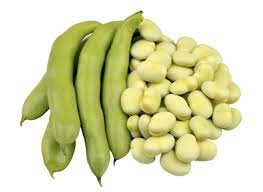
Also known as broad beans, fava beans are an excellent source of folate, iron, manganese and dietary fiber. They may additionally offer cardiovascular benefits and aid in weight management.
Fava beans are most commonly used in stews and side dishes. Also, fava beans may be served raw or cooked, though the bean pods must first be blanched and the mature seeds shelled before eating.
Lentils

Lentils are one of the world’s oldest health foods. They were first raised in the Middle East in 8,000 B.C. Lentils reign supreme in protein content, coming in second only to soybeans. They’re packed with B vitamins, magnesium, zinc and potassium. Also, rich in polyphenols, lentils are known to have strong antioxidant, anti-inflammatory and neuroprotective effects.
Most commonly used in soups, stews, salads, side dishes and Indian dishes, lentils are uniquely categorized by they color. Colors typically include brown, puy, green, yellow, red, and beluga.
These are among the healthiest legumes, though there are others. Legumes pack some serious health-promoting benefits that have been serving humanity for thousands of years. Whether they serve the purpose of a meat alternative or as a source of plant based protein legumes will likely continue to be more and more instrumental in our lives.
